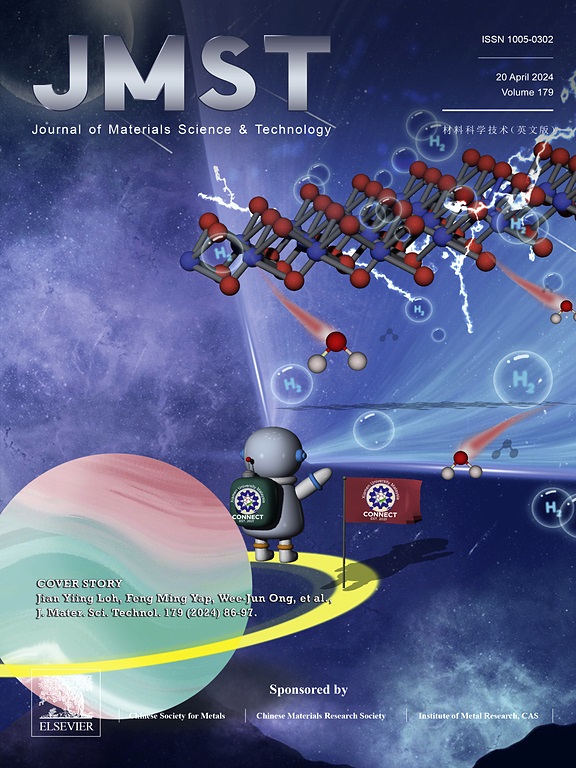IF 11.2
1区 材料科学
Q1 MATERIALS SCIENCE, MULTIDISCIPLINARY
引用次数: 0
摘要
稳定的电气和电磁干扰(EMI)屏蔽性能对于新一代柔性电子设备的开发至关重要,但在应变条件下保持稳定仍然是一项挑战。本研究利用共晶镓铟 (EGaIn) 开发了一种复合弹性体,其特点是电路设计灵活性高、导电性好、电阻变化极小,并且在高应变条件下具有稳定的 EMI 屏蔽效果。这种复合材料是通过在聚二甲基硅氧烷(PDMS)下层沉积 EGaIn 颗粒,然后在 PDMS 上层进行自封装而制成的。PDMS/EGaIn 复合弹性体在应变条件下具有强大的电气和 EMI 屏蔽性能,这要归功于内部形成的无缺陷液态金属 (LM) 网络。此外,复合弹性体表面的多功能电路嵌入能力,以及不受应力方向影响的电阻特性,都突出了其在电子应用领域的多功能性。具有优异拉伸性和强度的弹性体在战斗机器人和航空航天服装领域的应用前景十分广阔。这种仿生物弹性体在柔性电子、柔性电磁隐蔽和航空航天技术等多个领域都展现出巨大的潜力。本文章由计算机程序翻译,如有差异,请以英文原文为准。

Elastic liquid metal composite with strain-independent EMI shielding properties
Stable electrical and electromagnetic interference (EMI) shielding performance is crucial for the development of the new generation of flexible electronic devices, but maintaining stability under strain remains a challenge. This study presents the development of a composite elastomer utilizing eutectic gallium indium (EGaIn), characterized by its high flexibility in circuit design, excellent conductivity, minimal resistance variation, and consistent EMI shielding effectiveness under high strain conditions. The composite is engineered through the deposition of EGaIn particles within the lower layer of polydimethylsiloxane (PDMS), followed by the self-encapsulation of the upper PDMS layer. The robust electrical and EMI shielding properties of the PDMS/EGaIn composite elastomers under strain can be attributed to the internally formed defect-free liquid metal (LM) network. Furthermore, the composite elastomer's versatile circuit inscription capability on its surface, coupled with its resistance independence from the stress direction, underscores its functional versatility in electronic applications. Elastomers with exceptional stretch and strength hold great promise for applications in combat robotics and aerospace apparel. This biomimetic elastomer exhibits vast potential across diverse domains, including flexible electronics, flexible electromagnetic concealment, and aerospace technologies.
求助全文
通过发布文献求助,成功后即可免费获取论文全文。
去求助
来源期刊

Journal of Materials Science & Technology
工程技术-材料科学:综合
CiteScore
20.00
自引率
11.00%
发文量
995
审稿时长
13 days
期刊介绍:
Journal of Materials Science & Technology strives to promote global collaboration in the field of materials science and technology. It primarily publishes original research papers, invited review articles, letters, research notes, and summaries of scientific achievements. The journal covers a wide range of materials science and technology topics, including metallic materials, inorganic nonmetallic materials, and composite materials.
 求助内容:
求助内容: 应助结果提醒方式:
应助结果提醒方式:


